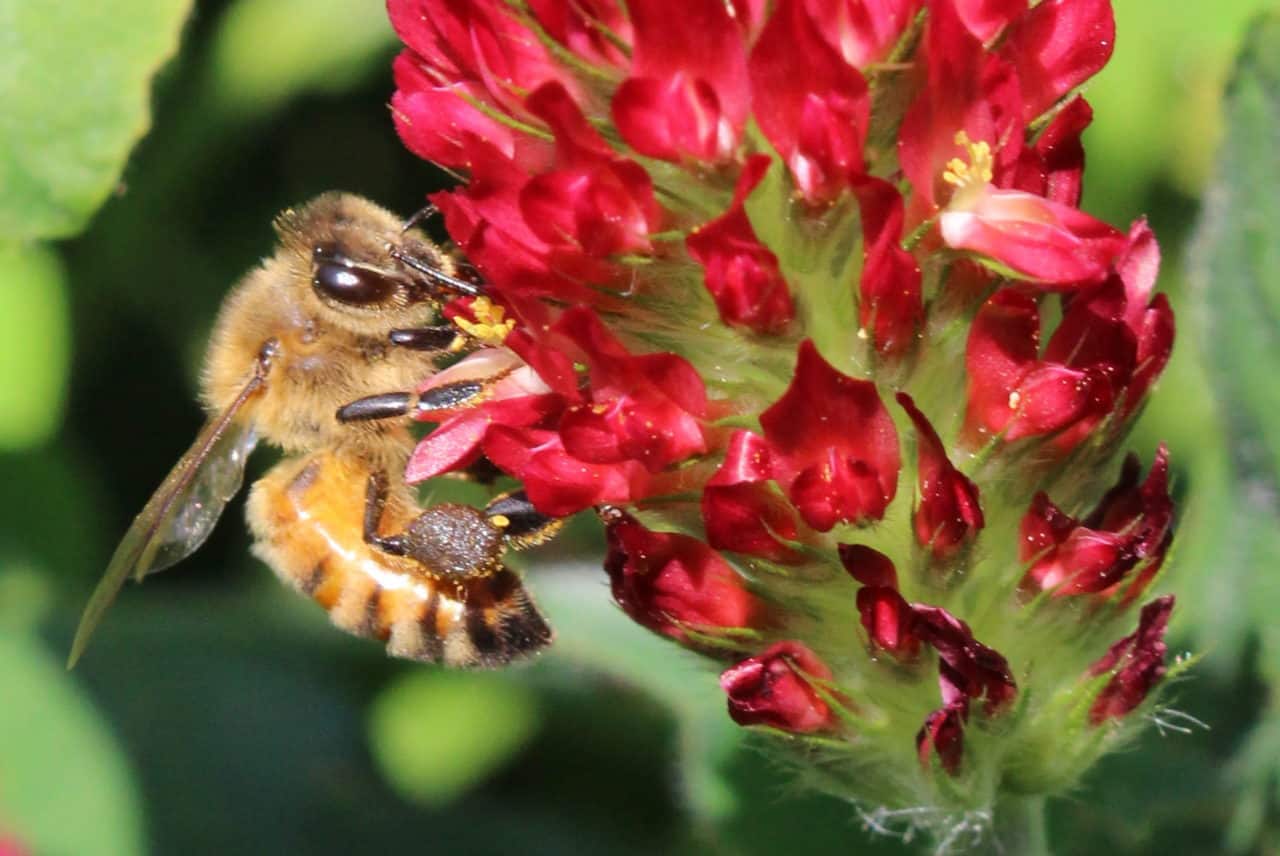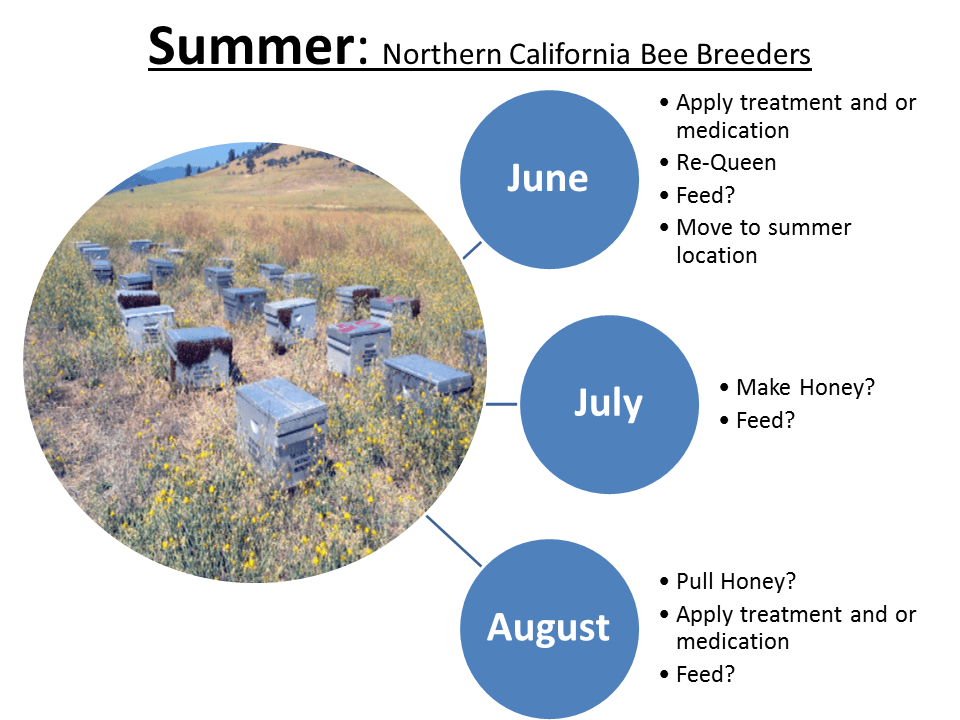Clover seed is an important crop grown in western Oregon that benefits rom hired honeybee colonies to boost yields. The Willamette Valley has an ideal climate for seed production with high annual rainfalls that allow growing without irrigation but infrequent rains in July and August allow seed to be harvested with limited risk of moisture damage. There are three main types of clover grown for seed in Oregon with all belonging to the Trifolium genus of the Fabaceae family. They are red clover (T. pratense), crimson clover (T. incarnatum) and white or Dutch clover (T. repens). In addition to clovers the Fabaceae family includes other…
Category: Around the Country
Meadowfoam Pollination
May in the Willamette Valley is a time of lush green fields of grazing pasture and grass seed crops covering the flatlands along the I-5 corridor from Eugene to Portland. These verdant fields are punctuated by small plantings of dense, low growing, brilliantly white flowers, appropriately called Meadowfoam. Meadowfoam (Limnanthes alba) is an annual oilseed crop with a native range from Vancouver Island, BC to northern California. The oil derived from Meadowfoam seeds contains long-chain fatty acids that are very stable relative to other vegetable oils. This resistance to degradation make it a valuable ingredient to prolong shelf life of products and it is of…
Oregon State Sentinel Apiary
Spring has come early to western Oregon and it means that monitoring and sampling of colonies in the newly established sentinel apiary is already underway. The sentinel apiary is located at the Oak Creek Center for Urban Horticulture (OCCUH) on the western edge of the Oregon State University campus in Corvallis. The location provides a diversity of forage including natural, agricultural and low density urban areas. The OCCUH apiary is maintained for research and teaching purposes as part of the OSU Honeybee Lab and Oregon Master Beekeeper program. The apiary consists of colonies in a…
“Winter” Beekeeping in Florida
It’s cold outside. All 50 states experienced freezing temperatures at the same time this past week for the first time since 1976. While these surprisingly low fall temperatures maybe old hat for the rest of the country, it’s a little on the cool side for those of us in Florida. At 20°F, Jacksonville, FL experienced the coldest temperatures on record for the month of November. It usually doesn’t get cold (at least Florida’s version of it) until January. So what does this mean for FL beekeepers? The last of the Spanish needle, primrose willow, and marsh marigold will be gone shortly, and queens will start…
BIP goes to Seaside
The Bee Informed Partnership was well represented at the Oregon State Beekeepers Association annual meeting held Nov. 6-8 in Seaside, Oregon. OSBA Vice President and BIP advisory committee member Dr. Dewey Caron directed events over the weekend and delivered a talk titled “How to Locally Rear Selected-Stock Queens”. The conference was attended by 250 people with diverse bee backgrounds including commercial operators, hobbyists, queen breeders, academics and vendors. There was a good turnout from our BIP-PNW partner beekeepers with several giving presentations. BIP Co-Directors Dr. Dennis vanEngelsdorp and Dr. Marla Spivak were both in attendance with each giving multiple talks over the weekend. Ellen and I gave…
Fall: Cycle of Northern California Bee Breeder
This is the final installment of a 3 piece blog that summarized a year in the life of a Northern California Bee Breeder. We are quickly approaching the end of October and beekeepers in the area are closer and closer to giving their bees a much needed rest. October and November are the culmination of a year’s work. It’s make or break time for most and what you have is what you got and hopefully what you will end up with at the start of the new year. There is no time for re-queening, no hope for a miraculous turn around, and nothing more to…
Summer: Cycle of Northern California Bee Breeder
The graphic above illustrates the basic cycle of beekeeping during the summer season in northern California. Things like applying treatments and feeding are management decisions based on what the bees are doing in response to the environment around them. Feeding and treating is operation specific and location dependent. Think of treatment windows in terms of hive dynamics with bee population being one of the most important. Hive populations go in cycles, rising in times where forage is abundant and falling at times when available forage tapers off. It is much easier to effectively treat a hive for Varroa and Nosema when bee populations are low…
State of Beekeeping in Northern CA:
I have been living in Northern CA for just over a year now and from what I’ve been told the weather in the past year has been atypical. Last spring and early summer was late and unusually wet which led to one of the best star thistle crops in years. Because of the rain the star thistle was able to out compete the grasshoppers and produce more than enough flowers to keep the bees busy. Most beekeepers in the area were able to make a surplus of honey and I think the abundance of available forage during the summer months may have helped curb pests…
Cycle of a Northern CA Bee Breeder
Most commercial beekeepers will tell you that beekeeping has changed dramatically in the last 30 years coinciding with the arrival of Varroa mites in the late 80’s. It seems as though things have been in a constant state of change since then as beekeepers and scientists scramble to understand the complexities of Varroa, viruses, Nosema ceranae, pesticides and how they interact with bees, both, alone and in combination. The days of setting bees down in a single location and letting them go until it was time to extract honey are far gone. Now, commercial beekeepers start to fall behind if they are not making their…
The Ropes of Research – Learning My Way Around a New World
When I think back to when I first started as an apiary technician at the Pennsylvania Department of Agriculture the first thing that comes to my mind is how completely clueless I was when it came to beekeeping. I also had a lot to learn about scientific research. The more I learned the more I realized how little I actually knew. An answer to one question almost always leads to another question... I will never forget my first day in the field at a yard just outside the small town of Lewisburg, Pennsylvania. Dennis vanEngelsdorp and I met Jeff Pettis and Nathan Rice (USDA Bee…

